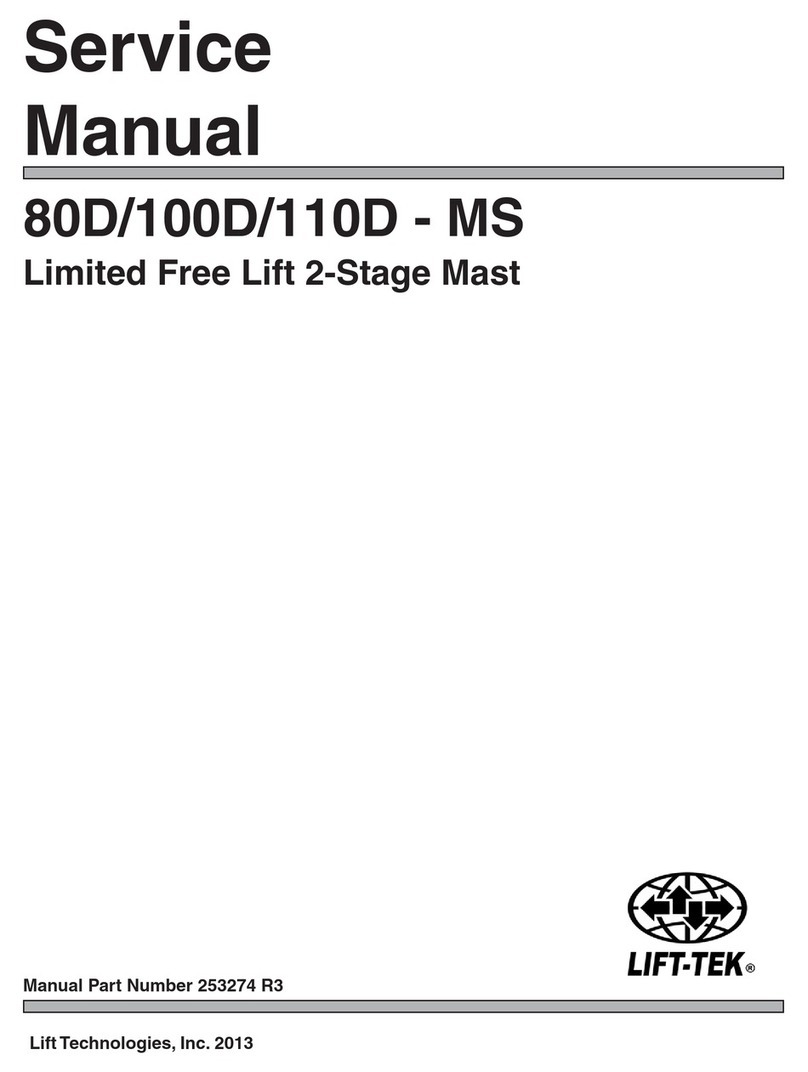
263920 R 2
Page 7
Installation
2.4 Mast Inspection
Check each of the following before using the Mast for the
first time.
CAUTION: The factory-set adjustments may not be
correct for your truck.
1. Inspect all chains for lubrication.
2. Inspect all chains for any visible damage.
3. Inspect the main lift chain adjustment for proper
tension and upright position.
4. Inspect the free lift chain adjustment for proper
tension and carriage position.
5. Inspect for lubrication in the Mast upright channels.
6. Check for Mast skewing.
MA2777.eps
Carriage 2 in.
Below Outer
Upright
Outer Upright
and Carriage
Flush Outer
Upright
*3 in.
Underclearance *5 in.
Underclearance
NOTE: Underclearance is based on mast
production series, actual mast
underclearance may vary by truck
model.
Figure 5. Mast side view showing correct position
for uprights and carriage.
2.4-1 Chain Lubrication
The main and free lift chains have been factory lubricated
using heat and pressure to force the lubrication thoroughly
into the chain links. Avoid removal or contamination of
this factory-applied lubrication. Do not wash, sand blast,
etch, steam clean, or paint the chains for initial Mast
installation. If chains need lubrication, refer to
Section 5.6. Chain Service
2.4-2 Upright and Carriage
Position, Chain Tension
The main lift chains should be adjusted so that when the
unloaded Mast is fully lowered, the uprights are flush at
the bottom (see Figure 5). The free lift chains should be
adjusted so that when the unloaded Mast is fully lowered,
the carriage is properly positioned depending on the truck
type (see figure 6).
CONTINUED ON PAGE 8
MA0015.eps
Free Lift Chains
Adjusting Nuts
Outer Main
Lift Chain
Adjusting Nuts
Inner Main
Lift Chain
Adjusting
Nuts
Figure 6. Adjusting Chain Anchor
Location (driver’s view).




























